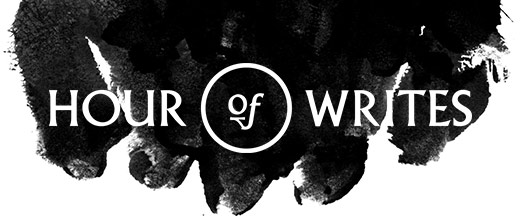Seven Basic Plots
Entry by: MONARCHB
29th January 2016
Seven Basic Plots
I. The camera fades from night to day. The black ink of the sky transformed into thin whispers of soft color: charcoal, gray, blue. Then the process is reversed: from stunning light to dusk to night.
II. The next act, how to divide water from itself--a simple magician's trick or a bona fide miracle? The rain in the clouds separate from its mother, the ocean. But, in a blink of the camera's eye, it happens. Water, water searching for its name in two different dreams of the sky and the sea.
III. Finally, dry land--after the millennia of tears, salt water. The oceans behave and stay in place. The earth blossoms from brown to green to trunk to branch to stem to leaf to bud to fruit. A pomegranate waiting for an anonymous hand.
IV. The camera pans out to capture the gold of the sun, the silver of the moon, the scattered diamonds of the stars. It is almost blinded by what it sees but remains speechless. Silent witness.
V. Feathers, scales, talons, gills. The sky and the sea mirror each other perfectly. For every jay or cardinal that soars, there is a lake trout or pike that can swim to the very depths and be still.
VI. The plot thickens. Every animal you can imagine makes an entrance: ocelot and iguana, musk ox and centipede. And then, the two big celebrities appear--He and She. But the scene is so chaotic that the camera can't keep them in focus. The man and his woman lost in the crowd.
VII. After all this excitement, there's nothing more to do but stop, quit. Say "cut" or "end scene." The camera fades to black and decides to go on a long hiatus. Somewhere warm--a garden in the south of Wales.
I. The camera fades from night to day. The black ink of the sky transformed into thin whispers of soft color: charcoal, gray, blue. Then the process is reversed: from stunning light to dusk to night.
II. The next act, how to divide water from itself--a simple magician's trick or a bona fide miracle? The rain in the clouds separate from its mother, the ocean. But, in a blink of the camera's eye, it happens. Water, water searching for its name in two different dreams of the sky and the sea.
III. Finally, dry land--after the millennia of tears, salt water. The oceans behave and stay in place. The earth blossoms from brown to green to trunk to branch to stem to leaf to bud to fruit. A pomegranate waiting for an anonymous hand.
IV. The camera pans out to capture the gold of the sun, the silver of the moon, the scattered diamonds of the stars. It is almost blinded by what it sees but remains speechless. Silent witness.
V. Feathers, scales, talons, gills. The sky and the sea mirror each other perfectly. For every jay or cardinal that soars, there is a lake trout or pike that can swim to the very depths and be still.
VI. The plot thickens. Every animal you can imagine makes an entrance: ocelot and iguana, musk ox and centipede. And then, the two big celebrities appear--He and She. But the scene is so chaotic that the camera can't keep them in focus. The man and his woman lost in the crowd.
VII. After all this excitement, there's nothing more to do but stop, quit. Say "cut" or "end scene." The camera fades to black and decides to go on a long hiatus. Somewhere warm--a garden in the south of Wales.





 Follow us on Twitter
Follow us on Twitter
 Follow us on Instagram
Follow us on Instagram